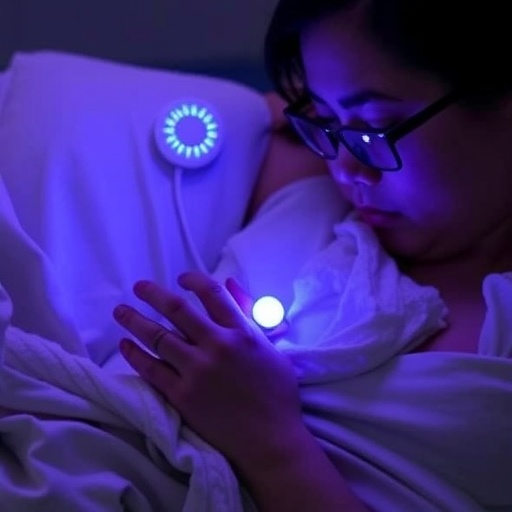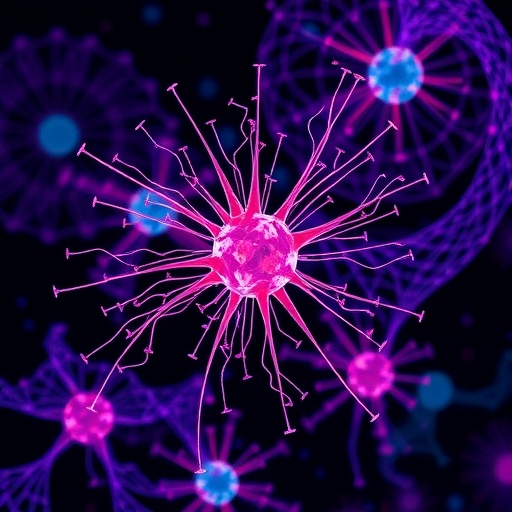In a groundbreaking randomized controlled trial recently published in the Journal of Perinatology, researchers have unveiled compelling evidence on how maternal multisensory stimulation profoundly influences both neonatal pain perception and maternal anxiety during invasive medical procedures. The study, led by Akkaya-Gül, Özyazıcıoğlu, and Çelikboya-Kabadayı, focuses on the highly stressful moment of heel blood collection—a routine yet distressing procedure in neonates—and investigates how the mother’s active engagement through combined sensory interactions can modulate pain responses and emotional states in both mother and child.
This innovative investigation has emerged against a backdrop of growing acknowledgement within neonatal care that early pain experiences not only impact immediate physiological stability but could also shape long-term neurodevelopmental outcomes. Historically, many approaches to neonatal procedural pain management have centered on pharmacological interventions or environmental modifications, yet the nuanced role of maternal sensory engagement has been relatively understudied. By deploying a multisensory stimulation model that incorporates tactile, auditory, and visual stimuli simultaneously provided by the mother, the research team has opened a new frontier in non-pharmacological analgesia and emotional regulation.
The experimental design meticulously randomized neonates subjected to heel lance procedures into control and intervention groups, allowing for a direct comparison between standard care and enhanced multisensory interaction. Maternal participants in the intervention cohort engaged in deliberate skin-to-skin contact, vocal soothing, and synchronized eye contact—a triad of sensory inputs calibrated to evoke comforting and regulatory responses. Sophisticated pain scoring systems for neonates, combined with validated anxiety inventories for mothers, provided robust quantitative data for analysis.
One of the most striking conclusions drawn from the trial is that neonates exposed to maternal multisensory stimulation exhibited significantly lower pain scores during heel blood sampling. The study utilized structured neonatal pain assessment tools that measure changes in facial expression, crying patterns, and physiological markers such as heart rate variability. Reduced activation of these pain indices suggests that maternal multisensory input can effectively attenuate nociceptive processing in newborns. Such attenuation likely reflects complex neurobiological mechanisms involving endogenous opioid release and the modulation of central pain pathways—areas ripe for further exploration.
Simultaneously, the maternal participants reported a marked decrease in state anxiety levels during the procedure. The familiarity and bonding inherent in multisensory stimulation appear to provide mothers with a sense of agency and control, offsetting the helplessness often experienced in clinical neonatal interventions. This anxiolytic effect may in turn create a positive feedback loop, enhancing the mother’s ability to provide soothing stimuli and fostering a more secure attachment environment, which is critical during the neonatal period.
Importantly, the implications of this research transcend the immediate clinical setting. The integration of maternal multisensory stimulation into neonatal care protocols could revolutionize how hospitals approach pain management, prioritizing holistic, dyadic strategies that benefit both newborns and caregivers. From an implementation standpoint, this approach is cost-effective, non-invasive, and easily adoptable within existing frameworks, underscoring its potential for widespread global impact.
Technically, the trial further examined the temporal dynamics of pain and anxiety reduction. Data illustrated that the beneficial effects of multisensory stimulation were most pronounced during and immediately after the heel lance, with some residual calming effect persisting for several minutes. This temporal profile suggests the activation of rapid neural pathways responsible for sensory integration and emotional regulation, including the involvement of the insular cortex and anterior cingulate cortex, both pivotal regions in pain perception and affective processing.
Moreover, the study highlights the critical role of multisensory integration in neonatal neurobiology. Early life sensory experiences are known to shape synaptic architecture and functional connectivity within the developing brain. By harnessing controlled multisensory stimulation, the intervention likely engages plastic neural circuits, potentially mitigating the deleterious consequences of procedural pain exposure. This opens fascinating avenues for neurodevelopmental research, particularly in preterm or at-risk neonates who are frequently subjected to repetitive painful stimuli.
The researchers also addressed potential confounding factors by controlling for variables such as gestational age, birth weight, and prior pain exposures. Statistical analyses confirmed that the observed effects were indeed attributable to maternal multisensory involvement rather than extraneous influences. This rigorous methodological approach lends credibility and reproducibility to the findings, setting a gold standard for future trials in neonatal pain management.
While acknowledging the remarkable outcomes, the authors prudently call for extended longitudinal studies to evaluate whether the immediate analgesic and anxiolytic benefits translate into improved neurodevelopmental trajectories and maternal mental health over time. Understanding the sustainability and possible dose-response relationships of multisensory stimulation will be essential to optimizing intervention protocols and tailoring them to diverse clinical populations.
This research dovetails with emerging trends emphasizing the importance of family-centered care models within neonatal intensive care units. Empowering mothers to actively participate in pain mitigation strategies redefines the caregiving paradigm and aligns with wider psychosocial and developmental goals. It is increasingly clear that incorporating multisensory techniques aligns with the principles of neuroprotective developmental care, also known as the NIDCAP approach, which advocates minimal stress and maximal comfort for neonates.
The study’s interface between sensory neuroscience and clinical practice also underscores the critical interplay between peripheral sensory inputs and central nervous system processing in shaping pain experiences. Investigating the specific neural substrates activated by maternal stimulation, such as the vagal afferent system and endogenous oxytocin release pathways, could deepen mechanistic understanding and inform pharmacological adjuncts that mimic or enhance these effects.
In terms of future clinical translation, integrating maternal multisensory stimulation protocols into nurse-driven care routines could facilitate standardization and scalability. Training healthcare providers to coach mothers effectively in tactile, auditory, and visual soothing techniques represents a promising operational avenue. Digital tools or wearable devices that support moms in delivering optimal sensory stimuli might also emerge from this foundational work, further innovating neonatal care.
Importantly, this research reflects a larger paradigm shift in pediatric medicine, emphasizing the bi-directional relationship between caregiver well-being and child health outcomes. Reducing maternal anxiety not only benefits maternal mental health but also positively influences breastfeeding success, bonding, and long-term psychosocial development. As such, maternal state anxiety stands out as a critical, modifiable target for holistic neonatal care interventions.
In conclusion, Akkaya-Gül and colleagues have delivered an insightful and technically rich contribution that bridges neuroscience, neonatology, and maternal health. Their findings compellingly advocate for multisensory stimulation as a potent, non-pharmacologic strategy to alleviate procedural pain in newborns while simultaneously soothing maternal anxiety. The broader clinical and developmental ramifications of this research herald a promising evolution toward more empathetic, evidence-based, and effective neonatal care practices worldwide. As the field progresses, blending detailed mechanistic studies with pragmatic clinical trials will be key to harnessing the full potential of maternal-infant multisensory dynamics.
Subject of Research: The effects of maternal multisensory stimulation on neonatal pain response and maternal anxiety during heel blood collection in newborns.
Article Title: Multisensory stimulation by mothers: impact on neonatal pain and maternal anxiety during heel blood collection: a randomized controlled trial.
Article References:
Akkaya-Gül, A., Özyazıcıoğlu, N. & Çelikboya-Kabadayı, E. Multisensory stimulation by mothers: impact on neonatal pain and maternal anxiety during heel blood collection: a randomized controlled trial. J Perinatol (2025). https://doi.org/10.1038/s41372-025-02436-5
Image Credits: AI Generated
DOI: https://doi.org/10.1038/s41372-025-02436-5
Tags: emotional regulation in maternal-infant interactionsheel blood collection in neonatesimpact of maternal engagement on infantsinnovative approaches to neonatal pain perceptionmaternal anxiety reduction techniquesmaternal involvement in infant medical proceduresmultisensory stimulation in neonatal careneonatal pain management strategiesneurodevelopmental outcomes of early pain experiencesnon-pharmacological pain relief methodsrandomized controlled trial in perinatologysensory interactions in neonatal procedures





